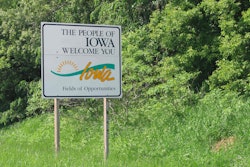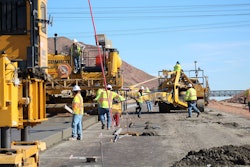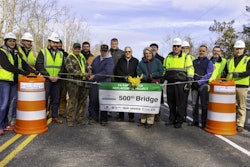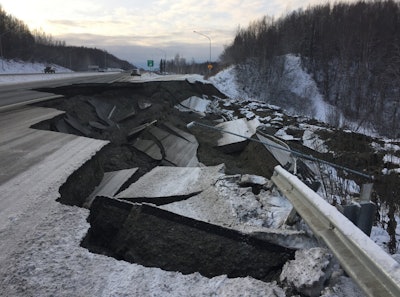
Alaska has made repairs to it’s roads and bridges in record time since the Nov. 30 earthquake deep beneath Anchorage and the Mat-Su Valley.
That’s thanks to a quick response from the president and Federal Highway Administration, according to the commissioner of Alaska Department of Transportation & Public Facilities (DOT&PF).
“We look forward to working with FHWA on more robust restoration of our infrastructure this summer,” Commissioner says John MacKinnon says in a press release.
The restoration of the Glenn Highway northbound and southbound lanes by early Dec. 5 reopened essential travel routes.
DOT&PF employees and Alaska contractors “have worked tirelessly to re-establish essential transportation links,” points out Gov. Mike Dunleavy in a press release. “Regardless of the challenges, they have committed to finding solutions in record time.”
The 7.0 magnitude earthquake struck at 8:29 a.m. Nov. 30, causing extensive property and infrastructure damage but claiming no lives. No serious injuries were reported, either.
Even as aftershocks followed, Alaska’s transportation department immediately shifted into high gear.
Crews swiftly deployed to inspect roads and bridges, finding earthquake damage severe and widespread in some areas. On the day of the earthquake, DOT&PF established dot.alaska.gov/earthquake2018 for online situation updates.
Infrastructure and related conditions were posted as soon as they were confirmed.
“The Glenn Highway Mirror Lake site was particularly difficult to repair because it was a set of two large sink holes that encroached into the northbound and southbound lanes,” the department says.
“Subsequent aftershocks expanded the sloughing well into both lanes. DOT&PF is confident that the temporary repairs have been completed will ensure the safety of the traveling public.”

Winter construction has been particularly difficult with frozen soil and temperature-related challenges in paving and painting.
While the thrust of repair work has been to restore essential travel, the department says it will pursue permanent repairs next summer.
The department will continue identifying damage sites, make repairs and plan for permanent fixes. Because the immediate repairs have been focused on restoring travel, they are not expected to have a 20-year life cycle, which is what the state expects from typical highway construction.
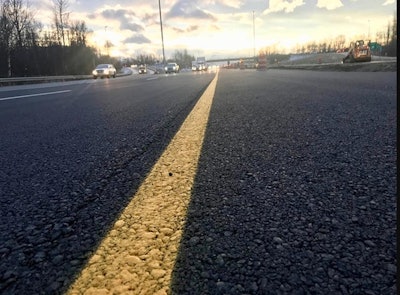 Seward Highway at Tudor after repairs.
Seward Highway at Tudor after repairs.“The rapid response to damage in Anchorage shows how investing time and money into preparations for these kinds of large, infrastructure-hobbling events can pay off in the long-run, even when there’s no way to tell when or where disaster may strike,” says an article published this week at The Verge.




